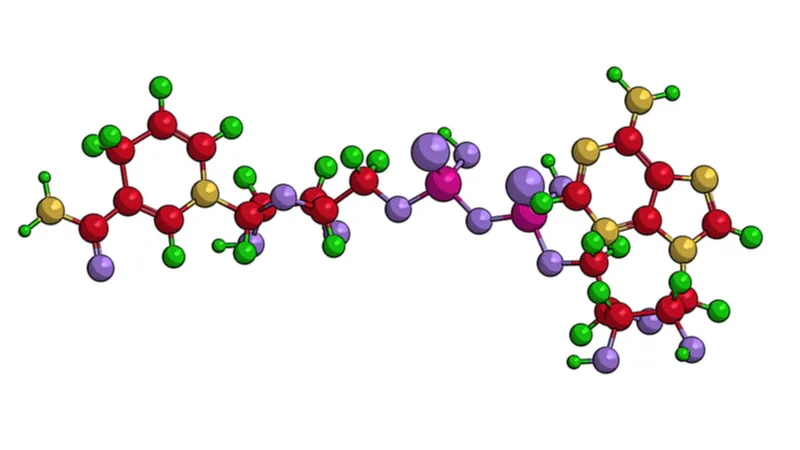In a study published in Nature Aging, a group of scientists has shown that NAD+ levels are correlated not only with age but with physical activity, with elder athletes rivaling normal young adults [1].
NAD: small, crucial, age-related
Nicotinamide adenine dinucleotide (NAD) is as important as it is tiny. As its name suggests, this molecule consists of just two nucleotides joined via their phosphate groups. Despite that, NAD performs many functions in the cell, the most important among them being carrying electrons around to facilitate redox (reduction/oxidation) reactions. Therefore, NAD exists in two forms: NAD+ acts as an oxidizing agent that takes electrons away from molecules, becoming NADH – the reducing agent that can donate electrons. With this “shuttle diplomacy”, NAD plays a crucial role in mitochondrial energy production.

Read More
NAD+ levels are known to decline with age, and this decline has been linked to multiple age-related diseases [2]. In animal models, NAD+ supplementation has been shown to provide health benefits, although the science is less clear regarding its effect on lifespan [3-5]. Yet, human data is hard to come by. To complicate things further, various tissues display different age-related NAD+ dynamics.
Aging incurs many metabolic changes to the body, with skeletal muscles taking a heavy toll. Age-induced loss of skeletal muscle mass and function, called sarcopenia in its most extreme form, limits a person’s mobility and ability to exercise, and it can cause frailty and falls. Despite mitochondrial dysfunction being linked to sarcopenia, the age-related dynamics of NAD+ in muscle have not been well-understood.
Regular exercise keeps your NAD+ up
This new important study analyzes what happens with NAD+ in our muscles as we age. The researchers recruited 52 people, dividing them into four groups: 12 young people (20-30), 17 old people (65-80) reporting normal levels of physical activity, 17 “trained” old people with above-average levels of physical activity, and 12 old people categorized as physically impaired with abnormally low physical activity levels.
“Trained” older adults reported having completed at least 3 one-hour exercise sessions a week for the last year, “normal” adults complete one session a week, and the physically impaired were people who scored less than 9 on the SPPB (Short Physical Performance Battery) test, a usual metric of fitness in such trials.
In addition to self-reporting, the researchers measured physical activity levels for five days after the recruitment. During that period, both the young adults and the “normal” older adults averaged around 10 thousand steps daily, while “trained” older adults were considerably more active, clocking more than 13 thousand daily steps on average.
The scientists then conducted a deep metabolomic analysis, recording the levels of more than a hundred various metabolites. They found that NAD+ was among the metabolites most downregulated with aging. Not only were NAD+ levels correlated with aging, they also depended on the amount of physical activity. While there was a considerable difference in NAD+ levels between the young adults and the normally active older adults, trained older adults were almost on par with the young group. The physically impaired older adults fared the worst, with the lowest levels of NAD+ recorded. The researchers also plotted NAD+ levels against physical activity in individual participants and found a strong correlation between the two.
Correlation or causation?
NAD+ was not the only metabolite correlated with physical activity. In fact, according to the researchers, their results imply that “most metabolic changes that occur with age in muscle can be reversed with regular exercise training.”
While NAD+ was negatively correlated with aging and positively correlated with physical activity, many metabolites exhibited an opposite behavior, including markers of oxidative stress. This led the researchers to believe that the decline in NAD+ occurs in parallel with increased reactive oxygen species (ROS) production.
Despite the results strongly suggesting that physical activity can rescue NAD+ levels, this is still not hard proof. As the authors note, the cross-sectional design of their study (that is, the participants were asked about their recent physical activity levels, and NAD+ was measured once) makes it difficult to establish a causal relationship. For this, multiple measurements across a period of time are required.
Conclusion
It has been known for a while that NAD+ levels decline with aging, and scientists have been searching for ways to replenish it. By showing the correlation between NAD+ levels and physical activity, this study suggests that exercise could be an effective way to boost your NAD+, at least in skeletal muscle. Still, more research is needed to establish a causal relationship between physical activity and NAD+ levels.
Literature
[1] Janssens, G. E., Grevendonk, L., Perez, R. Z., Schomakers, B. V., de Vogel-van den Bosch, J., Geurts, J. M., … & Hoeks, J. (2022). Healthy aging and muscle function are positively associated with NAD+ abundance in humans. Nature Aging, 1-10.
[2] Garrido, Amanda, and Nabil Djouder. “NAD+ deficits in age-related diseases and cancer.” Trends in cancer 3, no. 8 (2017): 593-610.
[3] Mitchell, S. J., Bernier, M., Aon, M. A., Cortassa, S., Kim, E. Y., Fang, E. F., … & de Cabo, R. (2018). Nicotinamide improves aspects of healthspan, but not lifespan, in mice. Cell metabolism, 27(3), 667-676.
[4] Miao, Y., Cui, Z., Gao, Q., Rui, R., & Xiong, B. (2020). Nicotinamide mononucleotide supplementation reverses the declining quality of maternally aged oocytes. Cell reports, 32(5), 107987.
[5] Hou, Y., Wei, Y., Lautrup, S., Yang, B., Wang, Y., Cordonnier, S., … & Bohr, V. A. (2021). NAD+ supplementation reduces neuroinflammation and cell senescence in a transgenic mouse model of Alzheimer’s disease via cGAS–STING. Proceedings of the National Academy of Sciences, 118(37).





